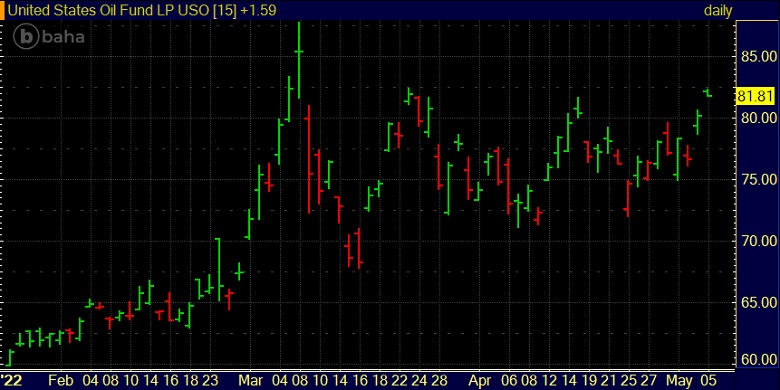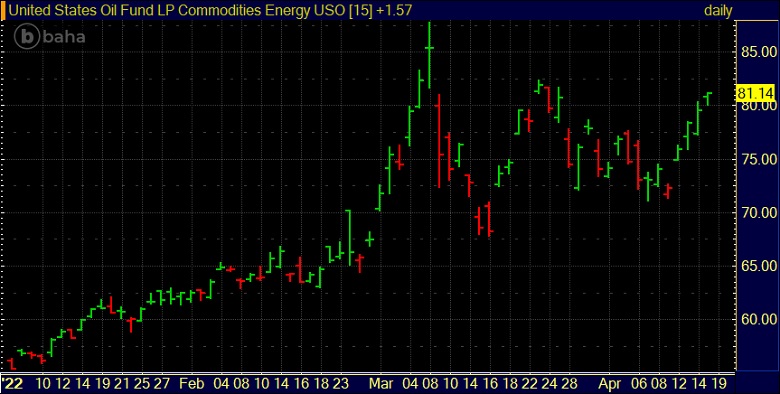Economic Warfare

In a world that’s tied together by complicated supply chains that span the globe, warfare is now economic. As amazing as it sounds, Russia got there first.

In a world that’s tied together by complicated supply chains that span the globe, warfare is now economic. As amazing as it sounds, Russia got there first.
The COVID-19 death toll probably climbed to almost 15 million in its first two years — about one out of every 500 people globally — according to a new World Health Organization estimate. The figure, far higher than the official numbers for 2020 and 2021, includes deaths directly due to COVID infection and those indirectly caused by pandemic disruptions, the Geneva-based health agency said Thursday. The WHO’s new estimate is more than twice the figures from individual governments’ reports showing about 6.2 million COVID deaths. “These sobering data not only point to the impact of the pandemic but also to the need for all countries to invest in more resilient health systems that can sustain essential health services during crises,” WHO Director-General Tedros Adhanom Ghebreyesus said in a statement. The toll was found by calculating the difference between all deaths that occurred and those that would have been expected to occur under normal circumstances. More than one-third of the additional 9 million deaths are estimated to have occurred in India, which has disputed the WHO’s new figure and delayed the release of the report, according to the New York Times. Narendra Modi’s government has stood by its own count of 523,900 deaths. The estimate is lower than one from the Institute for Health Metrics and Evaluation at the University of Washington, which calculated in March that the pandemic had killed 18.2 million people, calling it the biggest “mortality shock” since the Spanish flu. Deaths from the 1918-1919 outbreak have been estimated as high as 50 million, according to the U.S. Centers for Disease Control and Prevention. Of the total, 9.5 million pandemic deaths were estimated to be directly caused by COVID infections, according to the WHO report. Ten countries, including Brazil, Egypt, India, the U.S. and Russia, accounted for 68% of the excess fatalities. About 70 countries don’t record causes of death among their populations. The number of deaths was most likely to be 14.9 million, the WHO said, though it could have been as low as 13.3 million or as high as 16.6 million. Many deaths occurred as the pandemic overwhelmed health systems, hampering access to treatment for other health conditions, the report said. Men accounted for 57% for the deaths, and most were among people over 60. “Measurement of excess mortality is an essential component to understand the impact of the pandemic,” Samira Asma, assistant director for data, analytics and delivery at the WHO, said in the statement. “Because of limited investments in data systems in many countries, the true extent of excess mortality often remains hidden.” India provided estimates for 2020 deaths in recent days and the WHO is continuing consultations with the government on the matter, Asma said. The WHO plans to update its estimate as more data emerge and the next update will include more Indian data, she said. COVID surpassed tuberculosis as the biggest infectious-disease killer in the world. The lung illness killed 1.5 million people in 2020, according to the WHO. Seasonal flu kills from 290,000 to 650,000 people each year, according to the agency. Continue reading “Covid Killed One Out of Every 500 People, WHO Report Shows……. Omicron as severe as other COVID variants -large U.S. study”

We’ve had a pop in the oil market to the $110 area. We feel this is premature and the market should pull back here on China shutdown fears. Profits are around $2,000 and with inflation running wild, that should be enough money to fuel your pickup truck and buy a steak dinner on us… Enjoy.
The omicron variant of the coronavirus that causes COVID-19 that has swept across the U.S. since late last year has taken a grimmer toll than earlier variants, including in people who were vaccinated and even had booster shots. That’s according to a Washington Post analysis of data from the Centers for Disease Control and Prevention, which found that 42% of COVID fatalities in January and February were of vaccinated people, compared with 23% of the dead in September, when the delta variant was still dominant. The data are based on the date of infection and limited to a sampling of cases in which vaccination status was known, the paper reported. The deaths were mostly in elderly people and people with compromised immune systems. Almost two-thirds of those people who died during omicron were 75 and older. Omicron, and its growing number of subvariants, has proved to be far more infectious than earlier strains. The rise in fatalities is thought to be linked to vaccine protection waning over time, making it harder for those patients who are most at risk to avoid contracting the disease. The data also show that unvaccinated people remain at far higher risk than the vaccinated, and are far more likely to die if they do become ill, and they are at more risk than people who have had their booster shot. “It’s still absolutely more dangerous to be unvaccinated than vaccinated,” Andrew Noymer, a public health professor at the University of California at Irvine who studies COVID-19 mortality, told the newspaper. “A pandemic of — and by — the unvaccinated is not correct. People still need to take care in terms of prevention and action if they became symptomatic.” COVID cases are still rising across the U.S. after their steep decline early in the year. The U.S. is averaging 60,953 cases a day, according to a New York Times tracker, up 55% from two weeks ago. The country is averaging 17,220 hospitalizations a day, up 16% from two weeks ago, but still close to the lowest level since the first weeks of the pandemic. The average daily death toll has fallen below 400 to 331. In a sign of how the trend has changed, New York City on Monday raised its COVID risk level to medium from low. The city is averaging 2,654 cases a day, compared with about 600 a day in early March. The number may be even higher as many people are now testing at home and the data are not all being collected. NN: By the time the leaves turn it will be back. The covid is still with us. For a fact cases are way under reported. That’s ok. When people around us start dropping dead again there will be no doubt. I urge you not to let your guard down. The best thing you can do is stay current on your vaccine……. Enjoy the quiet before the NEXT storm…….
WASHINGTON (Reuters) -Scientists and health officials by this summer should have a better sense of what type of COVID-19 booster will be needed to deal with the next phase of the pandemic and when it should be administered, top U.S. infectious disease expert Dr. Anthony Fauci said on Friday. The National Institutes of Health, where Fauci serves as director of the National Institute of Allergy and Infectious Diseases, is conducting clinical studies to determine if the next COVID booster should be specific to a particular variant of the coronavirus or designed to address more than one variant, known as a bivalent vaccine, ahead of the fall season, he said. “We likely will know over the summer when we’ll be able to, and what we’ll be able to, boost people with,” Fauci said at a virtual event hosted by the National Press Club in Washington. Fauci also said health experts are looking carefully into anecdotal reports that some people after taking a five-day course Pfizer Inc’s oral antiviral treatment Paxlovid have tested positive for the coronavirus or experienced mild symptoms. The government has been encouraging people at risk of severe disease who experience COVID symptoms to get a Paxlovid prescription as soon as possible. While health officials look into whether a viral rebound after Paxlovid is a real phenomenon, Fauci said: “The drug is still clearly very effective in preventing you from progressing to requiring hospitalization, the 90% efficacy seems to be holding strong.” Fauci also said it will be very difficult for the U.S. population to reach classical herd immunity against this virus due to several factors. They include its ability to evolve and mutate into diverse variants, waning immunity from infections and vaccines, and an anti-vaccine movement that has kept millions of people from seeking protection. It is unlikely the United States will ever eliminate COVID-19, he said, but the nation should strive to control the virus and get out of the acute pandemic phase. “When I said we are no longer in that fulminant acute phase, that does not mean that the pandemic is over,” he reiterated. “By no means is it over. We still are experiencing a global pandemic.”
China’s demand for oil is tumbling in April, as the country battles the latest wave of COVID infections by ordering massive lockdowns that are keeping people inside their homes and limiting industrial output, according to a Bloomberg report Friday. Gasoline, diesel and aviation fuel demand is on track to drop by 20% this month, sources with inside knowledge of China’s energy industry told Bloomberg. They said the decline is the equivalent to a drop in crude oil consumption of 1.2 million barrels a day. That would result in the biggest oil-demand shock in China since lockdowns began more than two years ago in Wuhan, the initial epicenter of the coronavirus outbreak that eventually turned into a pandemic. China is the world’s largest crude importer. Gasoline demand is logging the largest drop. Demand for diesel has slumped from the trucking industry, but there’s some support from the agricultural and industrial sectors. Energy demand is weakening as China tackles its latest wave of COVID infections by ordering millions of people to stay indoors under a zero-tolerance approach. During April, more than half of China’s largest cities were under lockdown measures, according to NPR. Most factories and offices reportedly remained closed in Shanghai, which is China’s biggest city and home to 25 million people. City officials on Friday said they would relax some restrictions on truck drivers to lessen pressure on food supplies and trade, the Associated Press reported. Amid the strict lockdowns, Beijing expects the Chinese economy to expand by about 5.5%, the lowest growth target since 1991. Prices for Brent crude, the international benchmark, and West Texas Intermediate crude each dipped on Mondays European open. With Brent trading at $102.84 and NY crude trading at $98.42 a barrel at 5:00 AM NY time. Oil has climbed by roughly 35% this year largely on the back of supply concerns stemming from the war against Ukraine by Russia, a major oil producer.
(Bloomberg) — Fears about the economic toll of China’s strict Covid Zero policy intensified Monday, as news that lockdowns were spreading to Beijing sent stocks, commodities and the yuan tumbling. The benchmark CSI 300 Index dropped more than 4% to the lowest since May 2020, wiping out gains from a March pledge by officials to support the economy. The onshore yuan fell to its weakest in a year on concerns about rising capital outflows and oil sank below $100 on worries over Chinese demand. A Covid flareup that shut down much of Shanghai appeared to worsen over the weekend after China ordered mandatory tests in a district of Beijing and locked down some areas of the capital. The news echoed around global markets with stocks and equity futures under pressure and havens like the dollar and Treasuries gaining.
Continue reading “Stocks, Commodities Tumble on China Covid Outbreak”

As you know, I expect oil to hit $150 a barrel but I expect that to be a highly contested trade. Soon the markets will be swamped with the news of internationally coordinated release of oil from strategic reserves. I expect that to drive oil prices lower. In that downward move, we will start buying with all of our favorite instruments, including our new ones. For now, oil is headed very soon to a heavy resistance point. I want to stand aside as it deals with the news of the numbers.
We have some small profits in our ETF trade so I want to take those profits to cover Easter dinner. You should have 3 positions with an average price of around $77.50 and we’re getting out around $81.16 which is a profit of $5,215.50. As far as I’m concerned, that’s chump change. More important will be our next trade which will be in Crude Oil. Our CFDs are good to go.

The investment world has gone crazy with PC, carbon correct investments. When you mine and refine metals you leave a carbon footprint. When you drill for oil or gas, it’s the same. Plow a field. Deliver goods and services by ship or plane. The world has under-invested in real things and over-invested in fairy tales and a price will be paid.
Prices of crude oil futures went down by 4% on Monday amid supply worries prompted by the release of oil from strategic reserves of both the United States and other International Energy Agency members. And China lockdowns affecting the demand side, the investors were seemingly worried by the COVID-19 containment measures in China, and the lockdowns’ impact on Beijing’s oil imports. A second straight weekly decline after world consumers announced plans to release a record volume of crude and oil products from strategic stocks and as China lockdowns continued. The market has been watching developments in China, where authorities have kept Shanghai, a city of 26 million people, locked down under its zero tolerance for COVID-19. China is the world’s biggest oil importer. Member nations of the International Energy Agency (IEA) will release 60 million barrels over the next six months, with the United States matching that amount as part of its 180 million barrel release announced in March. The moves are aimed at offsetting a shortfall in Russian crude after Moscow was hit with heavy sanctions following its invasion of Ukraine.